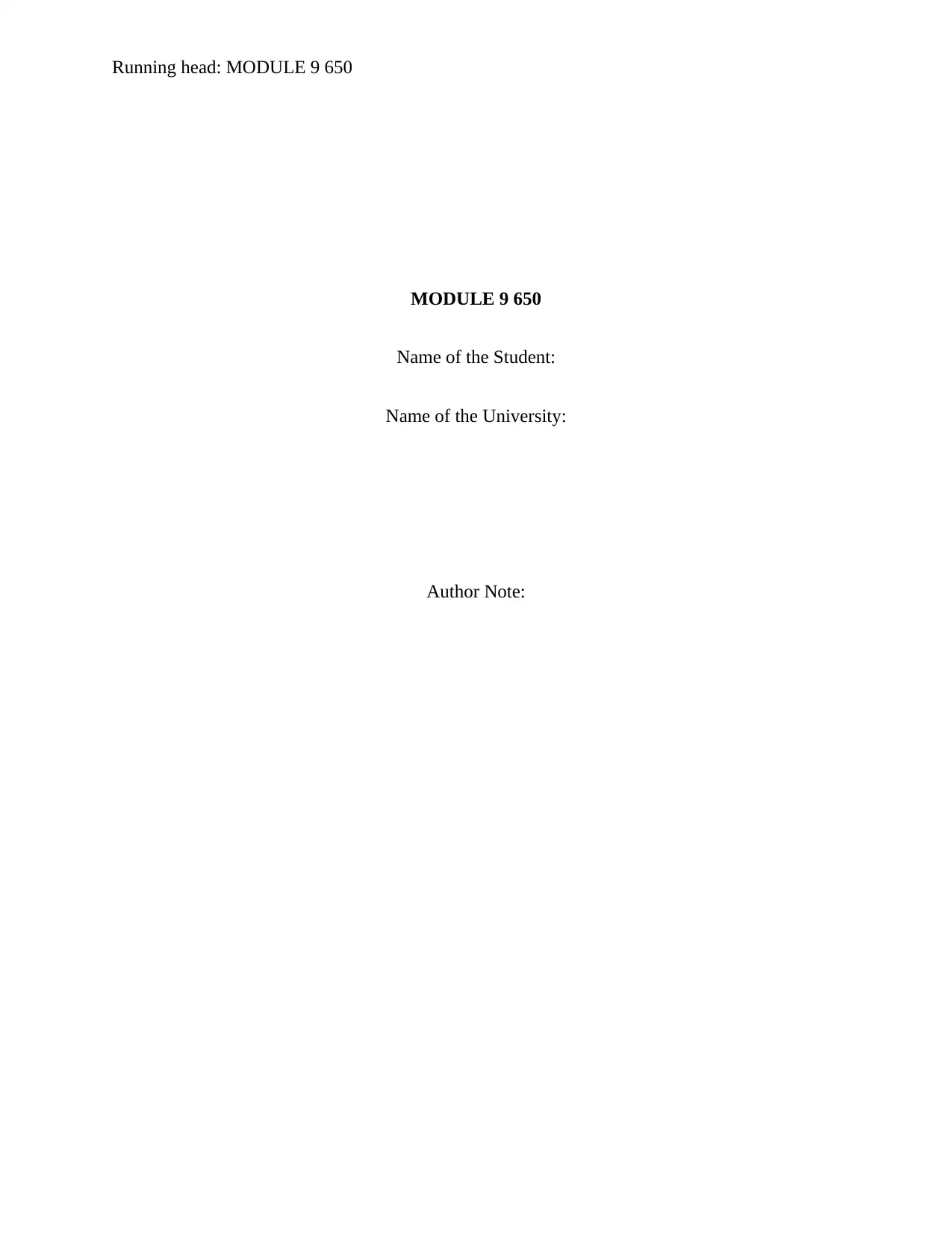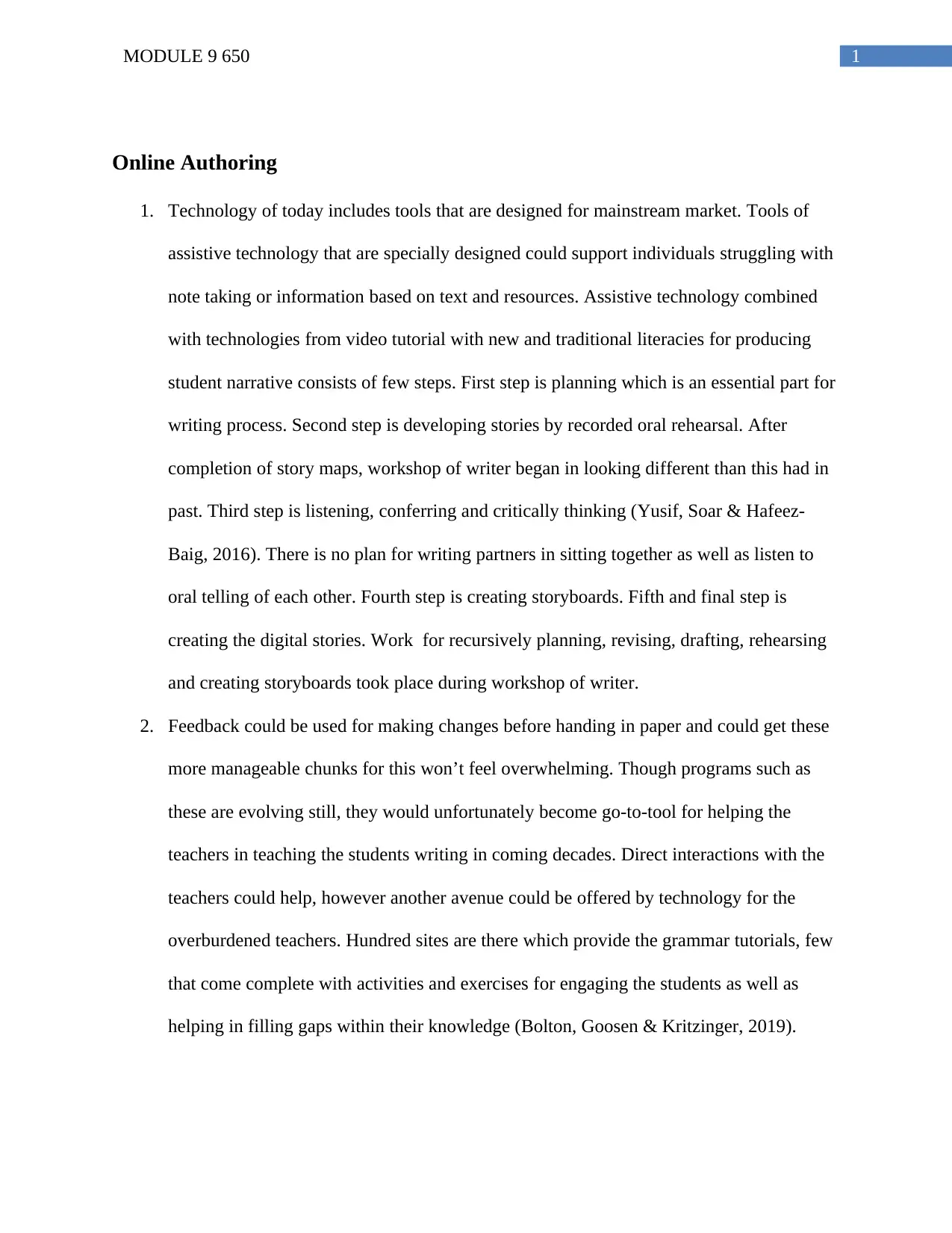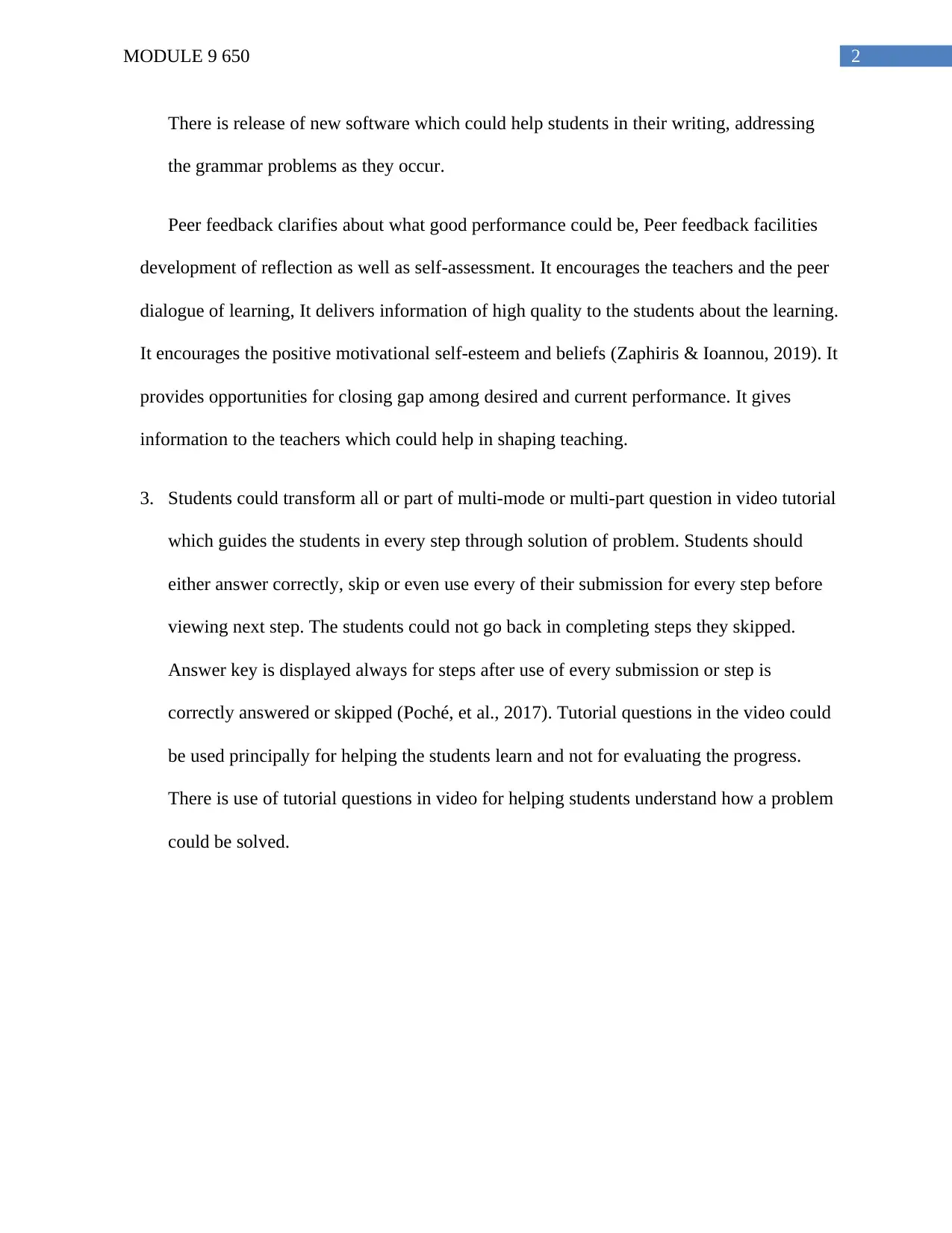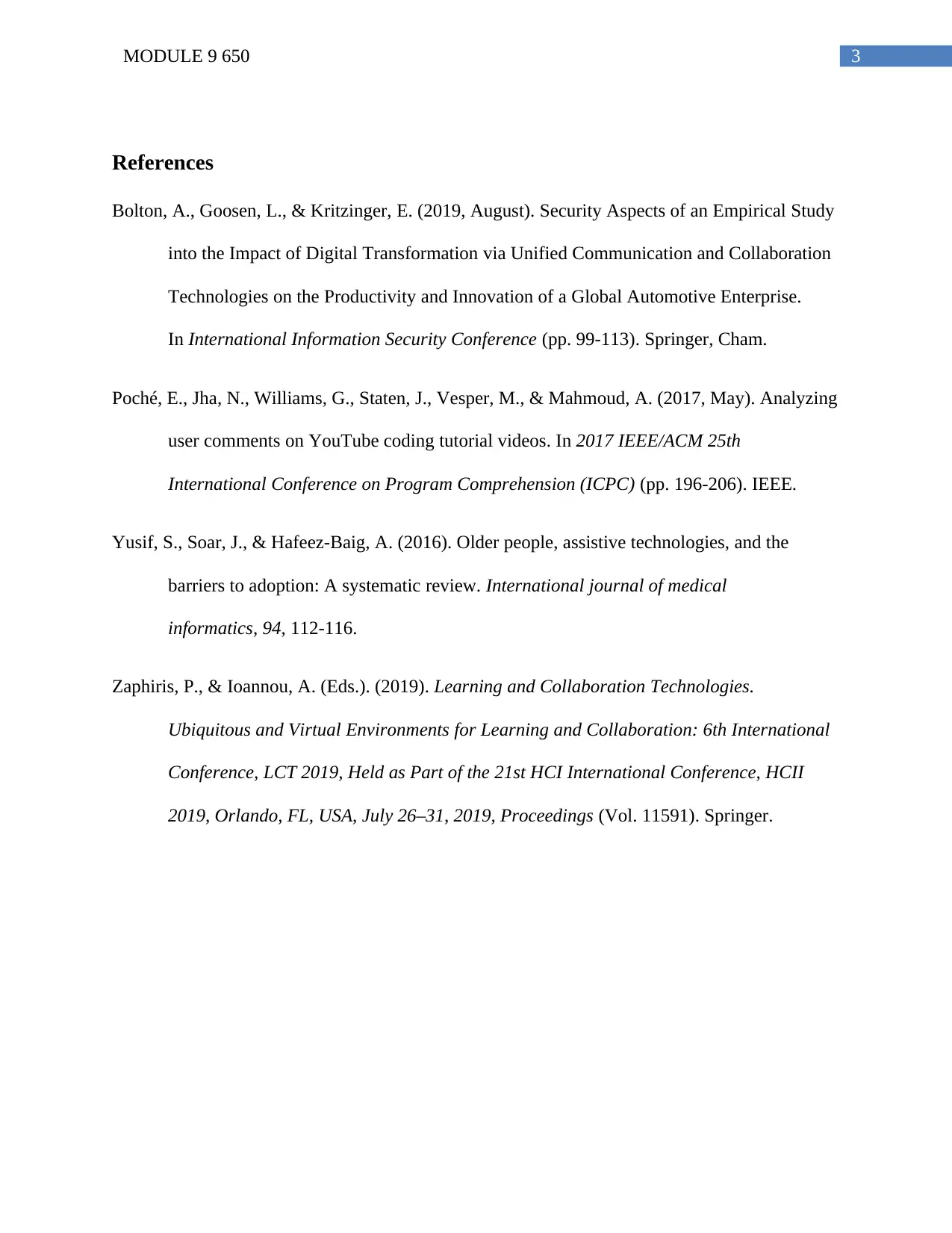Module 9: Digital Authorship Report - Online Education and Literacy
VerifiedAdded on 2022/08/24
|4
|796
|12
Report
AI Summary
This report, focusing on Module 9, explores the integration of technology and literacy in education, specifically highlighting digital authorship. It discusses the use of assistive technology, video tutorials, and peer feedback to enhance the writing process for students. The report outlines a step-by-step approach to digital storytelling, emphasizing planning, story development, and the creation of digital stories. It also examines the role of technology in providing resources for teachers and students, including grammar tutorials and software that addresses writing challenges. Furthermore, the report emphasizes the importance of peer feedback in developing reflection, self-assessment, and positive motivational beliefs. The report also mentions the use of video tutorials that guide students through problem-solving steps. The references include articles about security aspects of digital transformation, user comments on YouTube coding tutorial videos, assistive technologies for older people, and learning and collaboration technologies.
1 out of 4





![[object Object]](/_next/static/media/star-bottom.7253800d.svg)